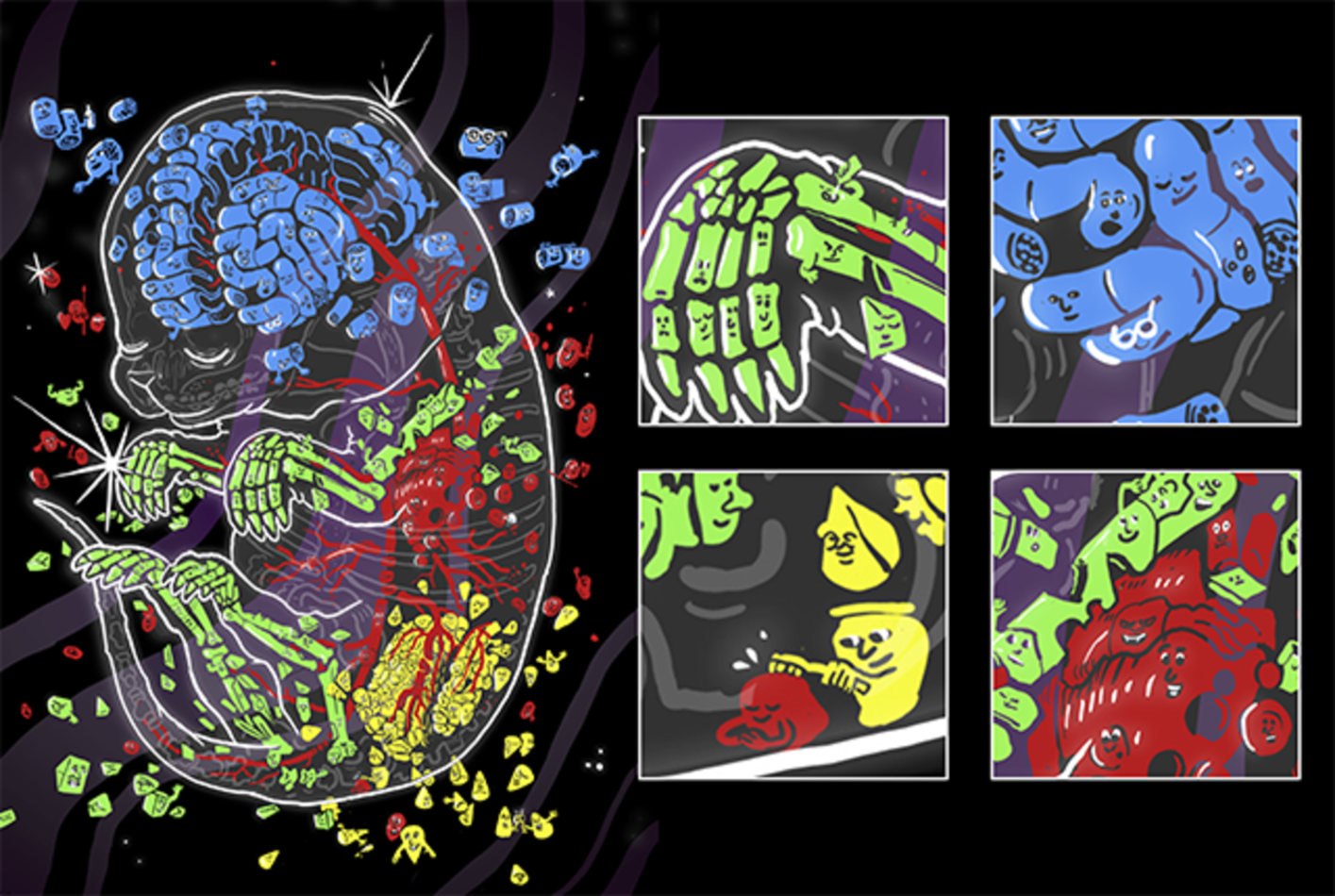
A new scientific study from the University of Washington School of Medicine explores “leading-edge” technology in capturing the spatial position of differentiating cells in developing mice. The authors of study, published today in the journal Science, eventually hope to use their “sci-Space” method in creating a “Google Earth” style atlas of mouse and human development.
“Sci-Space is a leading-edge technology that allows for the measurement and visualization of the cells and the genes they express in the developing mouse,” said Dr. Sanjay R. Srivatsan, one of the lead authors. “Previously, we would make these high-resolution measurements without knowing where they came from. We had this rich data, but we were missing the cell’s local context, which turns out to be crucial.”
The maps resulting from sci-Space chart the cellular and molecular events that unfold as an organism develops, according to Srivatsan.
“It’s like an intricately folded origami,” he said. “The body develops from the repeated divisions of a single cell. During these divisions, cells differentiate from one another by expressing different sets of genes, and eventually this leads to the emergence of recognizable organs and structures.”
According to the paper, the technology adapts sci-Space, a method for labeling nuclei using unmodified DNA oligos, which are strands of synthetic DNA or RNA, before single-cell RNA -sequencing. These DNA synthetic sequences are arrayed in a pre-determined gridded format and transferred onto a slice of tissue, analogous to the transfer of ink during the print making process. Recovery of these synthetic sequences, along with the genes expressed by a cell, allow researchers to position each cell within the tissue.
The study’s corresponding author, Dr. Cole Trapnell, recognizes the value of this method.
“Sci-Space could help us not only understand how development proceeds normally, but also how it can go wrong,” said Trapnell, an Associate Professor of Genome Sciences. “There are many genetic diseases where problems arise early in development. If we use the technique to study congenital disease, we might be better able to manage them in early life or even intervene in development to correct them.”
Scientists from several universities and institutes in the United States and Germany contributed the paper, “Embryo-scale, single- cell spatial transcriptomics;” it is available here.
Srivatsan and Trapnell, researchers in the UW Medicine’s Department of Genome Sciences, collaborated with others at the university’s Brotman Baty Institute for Precision Medicine and Howard Hughes Medical Institute. as well as scientists at: Institute for Stem Cell & Regenerative Medicine in Seattle, Foresite Labs in Boston, the Fred Hutchinson Cancer Research Center in Seattle, the Institute of Human Genetics, University of Lübeck, in Germany, the Max Planck Institute for Molecular Genetics in Berlin, the California Institute of Technology, in Pasadena, the Allen Discovery Center for Cell Lineage Tracing in Seattle.


